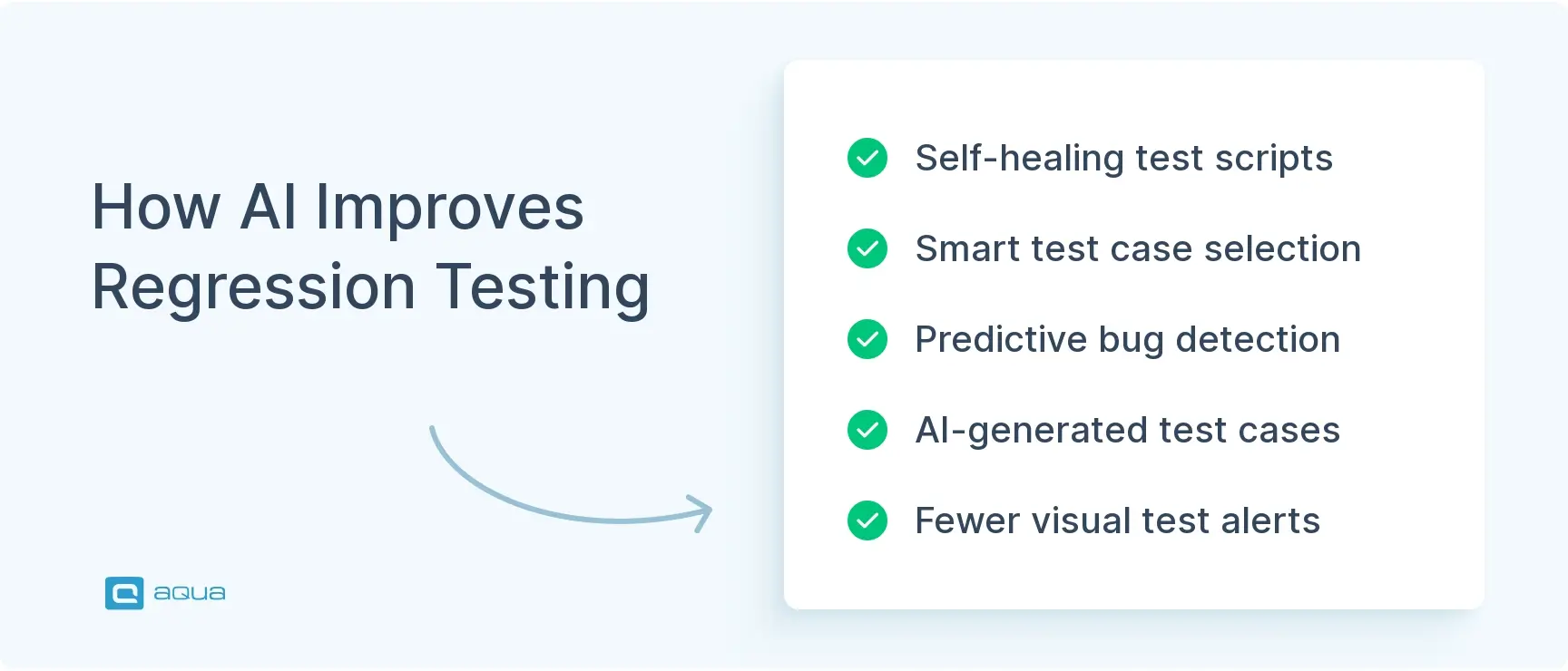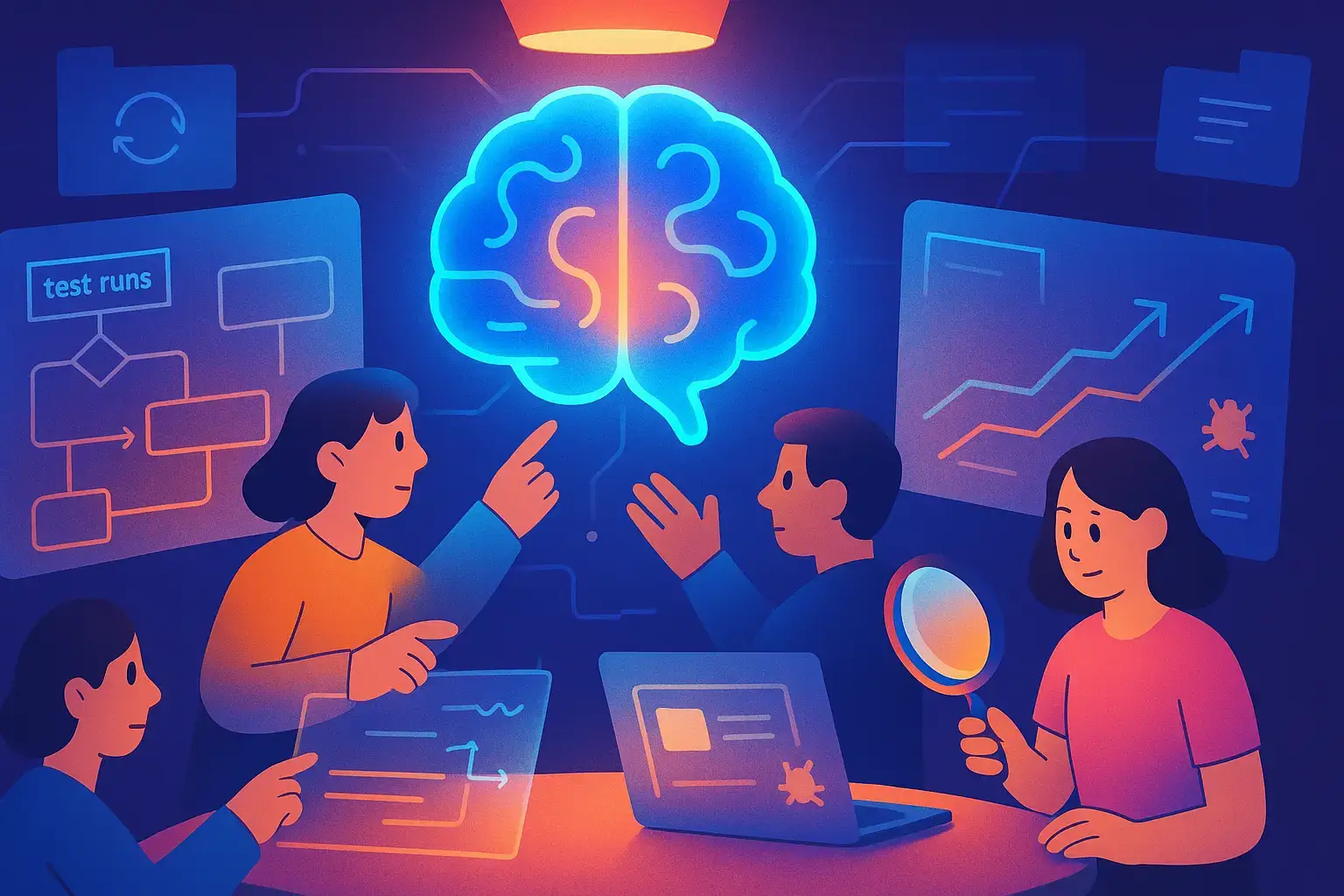Understanding Regression Testing
Regression testing is your digital safety net; it’s the practice of re-running tests after code changes to catch those sneaky side effects before your users do. Think of it like checking that fixing your kitchen sink didn’t somehow mess with your shower pressure. You’re essentially asking: “Did our latest changes accidentally break something that was working perfectly fine yesterday?”
At its core, regression testing involves:
- Re-running previously executed tests to verify that existing features still work after changes
- Ensuring that fixing one bug doesn’t introduce new ones
- Validating that recent code changes don’t negatively impact the existing codebase
- Providing confidence that the application remains stable during updates and maintenance
The real value of regression testing becomes clear when you consider what happens without it. According to the National Institute of Standards and Technology, bugs caught during production can cost up to 30 times more to fix than those caught during development.
But here’s the thing: it doesn’t have to be this way. Regression testing is changing, and there are smarter approaches emerging that can save your sanity while keeping your code stable.
Challenges in Traditional Regression Testing
If regression testing were a game, traditional methods would be playing in hard mode. Here’s what you’re probably dealing with right now, if you’re stuck with traditional methods:
Time Drain: Manual regression testing is painfully slow. You might spend days running tests that could delay your release cycle.
Resource Hogs: Automated testing helps, but traditional automation requires significant upkeep. Every UI change can break your test scripts, leading to a maintenance nightmare.
Coverage Gaps: It’s nearly impossible to test every possible scenario and path through an application. You’re constantly playing the probability game, hoping you’ve covered the important stuff.
The Repetition Loop: Running the same tests repeatedly is mind-numbing. This leads to tester fatigue and missed defects.
Test Data Management: Creating and managing test data across multiple test environments is a headache that never seems to go away.
Here’s what this typically looks like in practice:
| Tool | Best For | Learning Curve | Integration | Strengths | Limitations |
|---|---|---|---|---|---|
| Selenium | Web applications | Moderate | Excellent | Cross-browser, mature ecosystem | Setup complexity, flaky for dynamic content |
| Cypress | Modern JS apps | Low | Good | Fast execution, developer-friendly | Limited cross-browser support |
| Playwright | Cross-browser testing | Low-Moderate | Excellent | Modern API, multiple browsers | Newer ecosystem |
| Appium | Mobile applications | High | Good | Cross-platform mobile | Complex setup, speed |
The reality is that as development cycles continue to accelerate, traditional regression testing approaches simply can’t keep pace, creating a perfect storm where quality is constantly at risk.
Test management systems are powerful solutions to many of these problems. By centralising test efforts, streamlining workflows, and integrating seamlessly into your development pipeline, they help you regain control and move faster without sacrificing quality.
Aqua cloud takes this a step further with built-in generative AI that can create requirements, test cases, and test data in seconds, cutting setup time from hours to moments. With a centralised dashboard, you get full visibility and traceability across all manual and automated tests. It integrates natively with tools like Selenium, Jenkins, Ranorex, Jira, Confluence and Azure DevOps, ensuring your regression workflows stay in sync. And with its built-in bug-recording and native capture tools, aqua makes it easier than ever to turn test results into actionable fixes.
Insert AI into your regression test suite in seconds
AI Enhancements in Regression Testing
Remember when automated testing felt revolutionary? You could finally stop clicking through the same login flow for the hundredth time. But traditional test automation still comes with its own set of frustrations. Tests break when developers move a button two pixels to the left. You end up maintaining tests almost as much as you maintain actual code. And don’t even get me started on trying to figure out which tests to run when you’ve got a 10-hour regression suite and a deployment deadline breathing down your neck. Well, what if we told you that AI is about to make these problems feel as outdated as debugging with print statements? Here’s how AI is solving those headaches you’ve been dealing with:
Self-healing Test Automation
- Tests automatically adapt to UI changes without manual intervention
- Machine learning models identify element changes and adjust selectors on the fly
- Test scripts become dramatically more resilient and require less maintenance
Intelligent Test Selection
- AI analyses which tests are actually needed based on code changes
- No more running your entire 10-hour test suite when you changed three lines of code
- Tests are prioritised based on risk, history of failures, and code coverage
Predictive Analytics for Failure Detection
- AI models learn patterns from historical test results and code changes
- The system predicts which areas are likely to fail based on current changes
- Testing efforts can be focused on high-risk areas instead of exhaustive testing
Autonomous Test Generation
- AI creates test cases by analysing application behaviour and user flows
- Models identify edge cases that human testers might miss
- Test coverage expands without a proportional increase in test creation effort
Visual Testing Supercharged
- AI distinguishes between cosmetic changes and actual UI bugs
- Reduces false positives in visual regression tests
- Learns which visual differences matter to your specific application
The key difference here is that AI systems learn and improve over time. Traditional automation is static; you get what you program, and that’s it. AI-driven testing adapts, becoming more efficient with each test cycle as it learns your application’s behaviour patterns and your team’s priorities. This isn’t some distant future scenario, either. Teams are already using these AI-powered approaches to cut their regression testing time by 60-80% while actually improving test coverage. The question isn’t whether AI will transform how we handle regression testing—it’s whether you’ll be an early adopter or playing catch-up.

Implementing AI in Regression Testing Workflows
Okay, so AI-powered regression testing sounds amazing in theory. But how do you actually make this work without turning your entire testing workflow upside down or spending the next six months in “implementation hell”? The good news is that adding AI to your regression testing isn’t about throwing out everything you’ve built and starting from scratch. It’s about strategically enhancing your current process exactly where it makes the biggest difference.
We are assessing using Ai & ML in summarising test reports, especially ones that are very long. From something only the QEs can understand to something everyone can read and understand
Here’s how you should make this transition without losing sanity:
Step 1: Start with Test Impact Analysis: Begin by implementing AI tools that analyse which tests need to run based on your code changes. This gives you immediate time savings and builds confidence in the AI approach.
Step 2:Experiment with AI-Generated Tests: Use AI to generate supplementary tests rather than replacing existing tests. This lets you expand coverage while maintaining control.
Step 3: Integrate Self-Healing Capabilities: Add self-healing functionality to your most brittle test scripts—typically UI tests that break frequently with layout changes.
Step 4: Implement Predictive Quality Gates: Set up AI systems that predict potential failure areas before code is even tested, flagging high-risk changes early.
Most teams find success by starting small: pick one area where your current regression process is most painful and apply AI there first. This creates a quick win that builds momentum for wider adoption. Maybe it’s those UI tests that break every time someone adjusts the CSS, or that massive test suite that takes forever to run. Start there, prove the value, then expand.
Your team needs to see tangible benefits quickly, or they’ll lose faith in the whole approach. Start with one problem, solve it well, then use that success to tackle the next challenge.
Best AI tools for regression testing
You’ve bought into the AI testing vision, you understand the implementation strategy; now comes the important question: which tools should you actually invest in? With every vendor claiming to have “revolutionary AI capabilities,” it’s easy to get lost in the marketing noise. You already know that all AI testing tools are not created equal. Some are genuinely game-changing, while others are just traditional automation with an “AI” sticker slapped on. The difference lies in how intelligently these tools adapt to your specific application and how much they actually reduce your testing overhead rather than just shifting it around. Let’s look at the AI testing tools that are genuinely transforming how teams handle regression testing:
Aqua cloud
- AI-powered test management system that accelerates regression testing by generating requirements, test cases, and test data in seconds. This helps QA teams quickly update regression suites after each code change.
- Provides a 100% centralised platform for all automated and manual tests, making it easier to maintain and execute large regression test suites with complete traceability and coverage visibility.
- Seamlessly integrates with your existing tools like Selenium, Jenkins, Jira, Confluence, Ranorex, and Azure DevOps, allowing your regression tests to run automatically in CI/CD pipelines without disrupting your current workflow.
- Perfect for teams who want to scale their regression testing efforts while maintaining full control and visibility across the entire testing ecosystem.
Optimise 100% of your regression tests with an AI-powered TMS
UiPath
- Automation-first platform with strong self-healing capabilities built into its testing tools
- Detects and adapts to minor UI changes, reducing test failures and maintenance effort
- Easily integrates into existing CI/CD pipelines and enterprise environments
- Perfect for: Teams automating business processes and looking for stable, low-maintenance UI testing
Applitools Eyes
- Visual AI testing platform that catches visual regressions other tools miss
- Uses machine learning to understand which visual differences matter and which don’t
- Integrates with nearly any testing framework (Selenium, Cypress, TestCafe, etc.)
- Perfect for: Teams struggling with flaky visual tests and false positives
Mabl
- End-to-end testing with intelligent test healing
- Automates the creation of regression test plans based on user journeys
- Built-in analytics to identify patterns in test failures
- Perfect for: Teams looking for an all-in-one solution with minimal maintenance
Functionize
- Uses NLP and computer vision for intelligent test creation and maintenance
- Tests automatically adapt to application changes
- Provides AI-powered test insights and failure analysis
- Perfect for: Enterprise teams looking to scale testing across complex applications
The key differentiator with these AI tools isn’t just automation, it’s intelligence. These systems learn from your application’s behaviour and your testing patterns, becoming more effective over time. Unlike traditional test automation that degrades with application changes, AI-powered tests actually improve with use, creating a testing ecosystem that gets stronger and more reliable as your application evolves.
Use cases of AI in Regression Testing
Let’s face it: manual regression testing can’t keep up with the speed of modern development. And running the entire suite every time? It’s unsustainable. That’s why more QA teams are turning to AI as a real solution. Here’s how AI is reshaping regression testing in the real world:
Case 1: Smart Test Selection
Imagine you’re working on a SaaS product with hundreds of automated regression tests. A developer changes a single line of code in a billing component, and suddenly, your CI pipeline wants to run the entire suite. With AI-based test impact analysis, only the tests related to that billing component are selected and executed. The suite runs in under an hour instead of six. You ship faster, with the same confidence, and your team stops wasting time testing features untouched by recent changes.
Outcome: Faster runs, same confidence
Case 2: Fast and Intelligent Test Generation
You’re building a healthcare app with complex input logic; dozens of fields, validation rules, and edge cases. Manually writing all possible regression scenarios would take weeks. With AI-assisted test generation, your team feeds in the requirements, and the system instantly creates valid and invalid test cases across edge scenarios you hadn’t even considered. Suddenly, your regression coverage jumps from 60% to over 90%, without burning out your QA team.
Outcome: More coverage, less effort
Case 3: Visual Noise Filtering
Your team keeps getting false positives from UI tests; every minor style tweak breaks your regression suite, even though the functionality hasn’t changed. With AI-powered visual testing, the system learns to distinguish between meaningful changes (like a broken button) and harmless ones (like a label shift). As a result, false positives drop by 80%, and your team finally focuses on real issues instead of chasing visual noise.
Outcome: Real bugs, not noise
These examples show a clear shift: AI isn’t just making regression testing faster. It’s also making it smarter and more targeted. Teams are focusing on what matters most, catching issues earlier, and deploying with more confidence. As regression testing evolves, AI will continue to turn what was once a bottleneck into a strategic advantage.
The Future of Regression Testing with AI
What we’re seeing now with AI in regression testing is just the beginning. Here’s what’s on the horizon:
Fully Autonomous Testing: The next wave of AI regression testing will operate with minimal human intervention. These systems will:
- Analye application changes
- Generate appropriate tests automatically
- Execute those tests
- Triage results and report only actionable findings
- Learn from developer responses to improve future testing
Natural Language Test Creation: You’ll soon be able to describe test scenarios in plain English, and AI will handle the implementation:
- “Test that a premium user can apply a discount code during checkout”
- “Verify that login fails with invalid credentials but suggests password reset”
- The system translates these into executable tests without coding
Predictive Quality Engineering: AI won’t just test code—it will predict quality issues before code is even written:
- Analysing requirements for testability issues
- Flagging design decisions that historically led to bugs
- Suggesting test scenarios based on user behaviour patterns
Cross-Application Intelligence: Future AI systems will learn patterns across multiple applications:
- Understanding common failure patterns in similar features
- Applying lessons from one application to another
- Building industry-specific testing knowledge
Human-AI Collaboration The most productive future isn’t AI replacing testers—it’s a partnership:
- AI handles repetitive verification and validation
- Humans focus on exploratory testing and user experience
- AI flags unusual patterns for human investigation
- Testers train AI systems through feedback loops
This evolution means QA professionals won’t disappear; their roles will transform. The days of manually verifying the same feature for the tenth time are ending. Instead, your team will become quality strategists, focusing on risk areas that AI identifies and teaching AI systems to become better testers. The relationship between regression testing and AI continues to strengthen as new AI for regression testing solutions emerge.
Conclusion
Regression testing doesn’t need to eat up your entire release cycle. With AI, you can selectively rerun only what matters, generate test cases for edge scenarios you never had time for, and filter out false positives that slow your team down. From smart test selection to visual noise reduction, the tools are here, and teams are already cutting test time by hours while boosting coverage. You don’t need a full overhaul to start seeing results. Focus on your biggest bottleneck, apply the right AI solution, and let the improvements stack up from there.


















